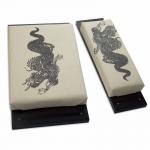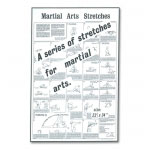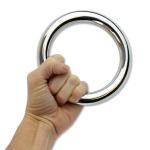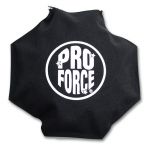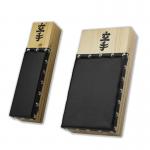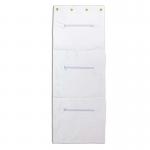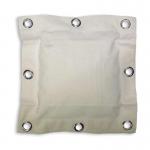Martial Arts Hand & Body Conditioning Equipment
-
From $42.95
-
From $39.95
-
$44.95
-
$19.95
-
From $34.95
-
$21.95
Let's start with makiwara. These old-school striking boards are the reason some karate students can punch with freakish precision. You're building calluses, sure, but you're also training your whole body to deliver power through your hands. The clapper styles are especially cool because you get that loud smack when you land a good strike. It's instant feedback, and honestly, pretty satisfying.
If your fists feel soft or your knuckles ache after training, you might want to spend some time with an iron palm bag. You fill it up with either rice, beans, or steel shot, and then go to work. Every hit helps toughen the skin, condition the bones, and train your hands to actually want to hit something. There's a reason this stuff's been around for generations. It works.
Kung fu rings might look like decorative bracelets at first, but once you start using them, you'll get it. Slide them up your forearms, run through some forms, and pretty soon your shoulders and triceps will be on fire. They're amazing for keeping your arms in the right position while building serious endurance. You don't need a gym full of machines when a couple of steel rings can turn your upper body into a machine.
Balance is a huge part of martial arts, but it's easy to overlook. That's why the balance platform is such a useful tool. Try throwing a few kicks on it and you'll feel your legs shaking like you're standing on a boat. After a few sessions, you'll notice your control improving fast. It forces your whole lower body to wake up and do its job.
Conditioning like this doesn't always look flashy. You're not spinning or jumping or doing tricks. You're hitting bags, gripping metal, standing still while your legs burn. But this is the kind of training that separates people who look like they can fight from people who actually can. The power, the control, the ability to take a hit without flinching are all built here.
Traditional karate dojos in Okinawa use makiwara boards daily. Chinese martial artists have practiced iron palm training for centuries, combining repetitive strikes with herbal recovery to harden their hands without wrecking them. These practices were the foundation of their training.
If you want gear that actually helps you become a better martial artist, this is the good stuff. Nothing fancy. Just solid tools that have stood the test of time.
How do I start conditioning my hands for martial arts?
This is one of the most common questions from beginners, and for good reason. Hand conditioning can be incredibly effective, but only if you approach it the right way. The key is to start slow and stay consistent. For most people, that means beginning with a canvas makiwara board or a lightly filled iron palm bag. Focus on clean, controlled strikes instead of just trying to hit hard. You want to develop alignment and proper technique before ramping up intensity.
Stick with medium resistance at first (like rice or beans in an iron palm bag), and use controlled reps a few times a week. Let your skin, joints, and bones adapt gradually. Rushing can lead to injury, especially in the wrists or knuckles. Over time, your hands will get tougher, your strikes will become sharper, and you'll notice more confidence in your form. Conditioning takes patience, but the payoff is worth it.
What is a makiwara and how do you use it?
A makiwara is a traditional Japanese striking post used in karate to develop focus, power, and striking alignment. Think of it like a wooden board or pad that gives just enough resistance to train your punch without wrecking your hands. The goal isn't to smash your knuckles into something solid. It's to develop better control, accuracy, and structure every time you strike.
There are different styles of makiwara, but the most common ones are either wall-mounted boards or vertical posts with a padded striking surface. The idea is to strike the pad with clean technique and let the slight rebound train your muscles to stay tight and aligned. You don't need to hit it with full power, especially in the beginning. Start with light to moderate contact and gradually increase force over time as your body adapts.
When used correctly, a makiwara can improve everything from wrist stability to hip rotation. Just be sure to warm up properly, focus on form, and ease into it. Like any kind of conditioning, the key is consistency, not intensity.
What should I fill an iron palm bag with?
Iron palm bags are meant to be customized based on your experience level and training goals. Most people start with something soft like dry rice. It gives just enough resistance to condition your hands without putting too much stress on your joints. Once your hands start adapting, you can move up to harder fillers like dry beans, sand, or even steel shot if you've been training for a while.
The key is to start with something forgiving and work your way up gradually. This helps avoid injuries and lets your skin, bones, and connective tissue get stronger at a steady pace. There's no need to rush it. Even traditional iron palm masters trained progressively over time.
Make sure your bag is properly sealed and filled to a level that creates a smooth, stable surface. If it feels lumpy or unstable, it'll be harder to strike cleanly and safely. And remember, it's not about how tough the filler is. It's about how consistent your training is.
Are iron palm and makiwara training safe for beginners?
Iron palm and makiwara training can be safe for beginners, as long as you approach them with patience and proper technique. The biggest mistake people make is going too hard, too fast. These tools are meant to condition your body gradually, not punish it.
If you're just starting out, it's a good idea to begin with soft fillers in your iron palm bag (like rice or beans) and light strikes on a padded makiwara board. Focus on form first. Your skin, joints, and bones will need time to adapt. That's completely normal.
It's always smart to check with an experienced instructor before diving into any kind of impact conditioning. They can help you avoid bad habits and teach you how to train safely. When done responsibly, this kind of training can be a great way to build strength and striking confidence over time.
What are kung fu rings used for?
Kung fu rings are used to develop upper body structure, arm positioning, and muscle endurance during traditional martial arts training. You'll often see them in southern Chinese styles like Hung Gar, where proper arm alignment and close-range control are key. Slide a few steel rings up your forearms, run through your forms or drills, and you'll immediately feel how they challenge your technique.
The weight of the rings forces your muscles to stay engaged the whole time. If your arms start drifting out of position, the rings will let you know. They clank, they shift, and they make it obvious when something's off. Over time, they help train better coordination between your shoulders, arms, and core, especially in stances and techniques that rely on rooted structure.
A lot of people are surprised how fast their endurance improves with regular ring training. It's a simple tool, but it works on the kind of muscle control that's hard to build any other way.
Can I use these tools to condition other parts of my body, like shins or forearms?
Some martial artists do use similar conditioning methods for areas like the shins, forearms, or even the torso, depending on their style and training goals. But it's important to understand that each part of the body responds differently to impact. What works well for the hands might not be the right approach for other areas.
Tools like makiwara boards and iron palm bags are designed specifically for hand and wrist conditioning. For other parts of the body, different tools and techniques are typically used. For example, forearm rolling drills or controlled partner conditioning can be safer and more effective than repurposing gear that wasn't made for those areas.
If you're thinking about expanding your conditioning beyond hand training, it's always smart to consult an experienced coach or instructor. They can help guide you toward methods that build toughness without risking long-term injury.
Does hand conditioning actually make your punches stronger?
Hand conditioning doesn't magically give you knockout power, but it absolutely helps you punch harder in a smarter way. The biggest benefit is structural. When your wrists, knuckles, and fingers are conditioned properly, they stay aligned on impact, which means more of your power gets transferred into the target instead of getting lost through bad form or hesitation.
Conditioning also helps with follow-through. If your hands aren't used to hitting things, your brain naturally holds back to protect them. Once your body knows your hands can handle impact, you start striking with more confidence and commitment.
So while conditioning alone won't turn you into a heavy hitter, it makes your punches cleaner, sharper, and more efficient. And that adds up to real power in a fight or during training.
Can hand conditioning help prevent injuries?
Yes, when done correctly, hand conditioning can reduce your risk of injury by strengthening the structures that take the most abuse during striking. That includes the knuckles, wrists, and all the little joints and connective tissues in between. The more conditioned your hands are, the less likely you are to tweak a wrist or bruise a knuckle when hitting a pad, bag, or opponent.
Conditioning also builds awareness. You learn how to align your fist properly, keep your wrist straight, and avoid sloppy strikes that can lead to sprains or other issues. Over time, your hands become more stable and reliable under pressure.
That said, it's not a magic shield. Conditioning should be part of a larger training plan that includes proper technique, warmups, and rest. If you try to rush the process or skip the fundamentals, you're more likely to get hurt than helped.
What martial arts styles use makiwara or iron palm training?
Makiwara and iron palm training are both rooted in traditional systems that emphasize striking power and body conditioning. Makiwara is most closely associated with Okinawan karate styles like Shotokan, Goju-Ryu, and Shorin-Ryu. It's a staple tool for developing crisp, focused strikes and building the kind of structural power karate is known for.
Iron palm training, on the other hand, comes from Chinese martial arts. It's especially common in internal and southern systems like Bagua, Hung Gar, and certain forms of Shaolin kung fu. The focus is on building hand strength, bone density, and relaxed power through repetition and breath control.
While the tools and techniques differ, both types of training share the same goal: helping you hit harder while reducing the chance of injury. Over time, some modern martial artists even mix elements of both into their routines, depending on what they're working on.
How long does it take to see results from conditioning training?
It really depends on how often you train and how consistent you are. Most people start noticing small changes within a few weeks. That might include tougher skin, better wrist alignment, or more confidence when hitting pads or bags. The deeper structural changes, like bone density improvements and joint conditioning, usually take several months of steady effort.
It's not something you want to rush. Going too hard too soon can set you back with injuries. But if you stick to a regular schedule, even just a few short sessions each week, the results will start to stack up. Your strikes will feel cleaner, your hands will recover faster, and you'll be able to train harder without second-guessing your body.
Long story short: progress is gradual, but it's real. Just stay consistent and give your body time to catch up.
Should I wear gloves or hand wraps when conditioning?
That depends on the type of conditioning you're doing and your experience level. If you're striking something hard like a makiwara or iron palm bag for the first time, using hand wraps or light gloves can give your skin and joints a little extra protection while you ease into the training.
That said, most traditional conditioning is done barehanded because the goal is to toughen the hands directly. Once your skin and structure start adapting, you may find that gloves actually get in the way. Some people use wraps just for the wrist support and keep the knuckles bare. Others go completely without any protection once they're further along.
There's no one-size-fits-all answer here. The key is to listen to your body. If you're feeling pain or strain that doesn't feel productive, add some protection or back off a bit. Over time, your hands will tell you what they're ready for.
Can kids or teens use this kind of training gear safely?
Some conditioning tools can be safe for kids or teens when used properly and under supervision, but it really depends on the child's age, experience level, and the specific type of equipment. For example, light striking on a padded makiwara or soft iron palm bag can help young martial artists build coordination and technique without putting too much stress on their developing joints.
That said, impact conditioning should always be approached carefully with younger students. Their bones, tendons, and ligaments are still growing, so it's important not to push too hard or fast. Supervision from a qualified instructor or experienced adult is key to making sure the training stays safe and appropriate.
If you're thinking about introducing this type of gear to a younger martial artist, it's a good idea to start with the softest options and keep sessions short and controlled. Focus on form, not force. With the right approach, conditioning can be a valuable part of a young person's martial arts journey.
What's the difference between a makiwara board and a makiwara clapper?
Both are used for striking practice, but they serve slightly different purposes. A traditional makiwara board is usually a flat, padded surface mounted to a wall or post. It flexes when you strike it, giving you resistance and helping you develop power, alignment, and wrist control.
A makiwara clapper, on the other hand, is designed with two boards that slap together when hit. It still gives you resistance, but it also adds audible feedback. That sharp clap lets you know when your strike lands clean and with proper speed and form. It's especially useful for fine-tuning your timing and accuracy.
Some people prefer the silent focus of a standard board, while others like the extra feedback from the clapper. They both build hand strength and striking technique, so it really comes down to personal preference and training style.
RECENTLY VIEWED





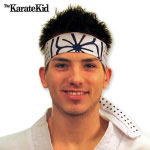
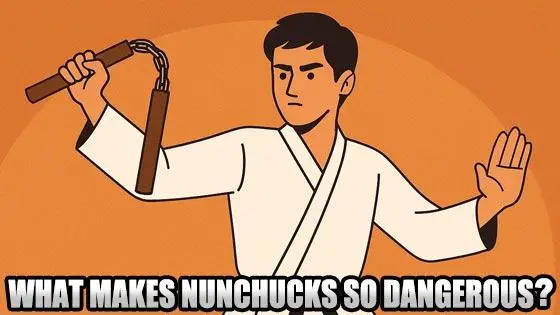

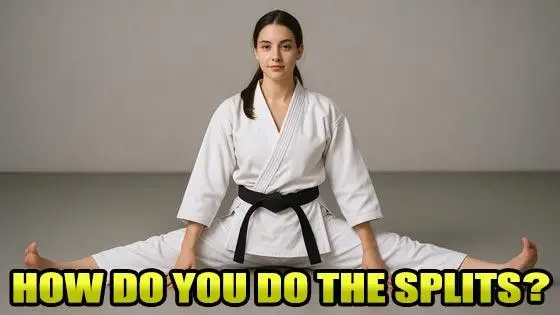



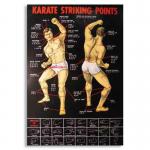
 (1)
(1)